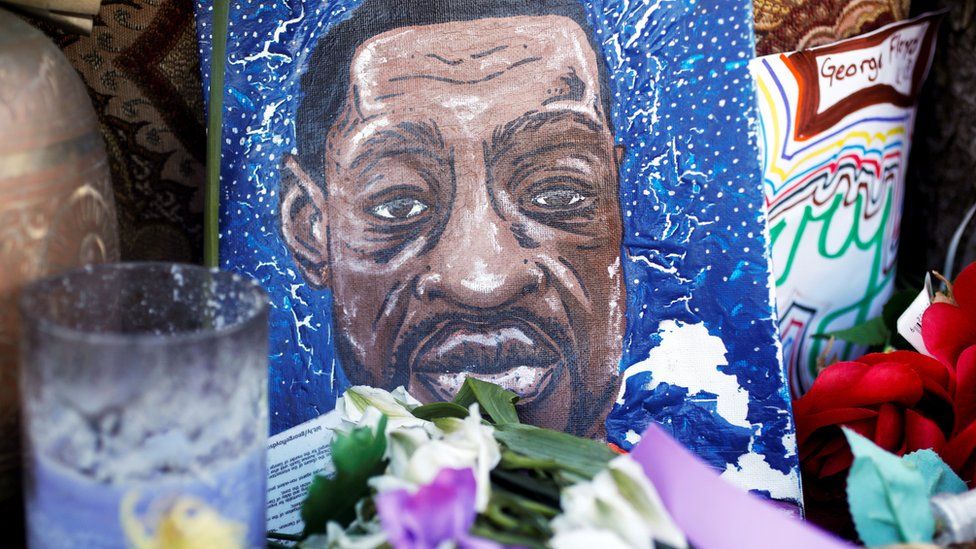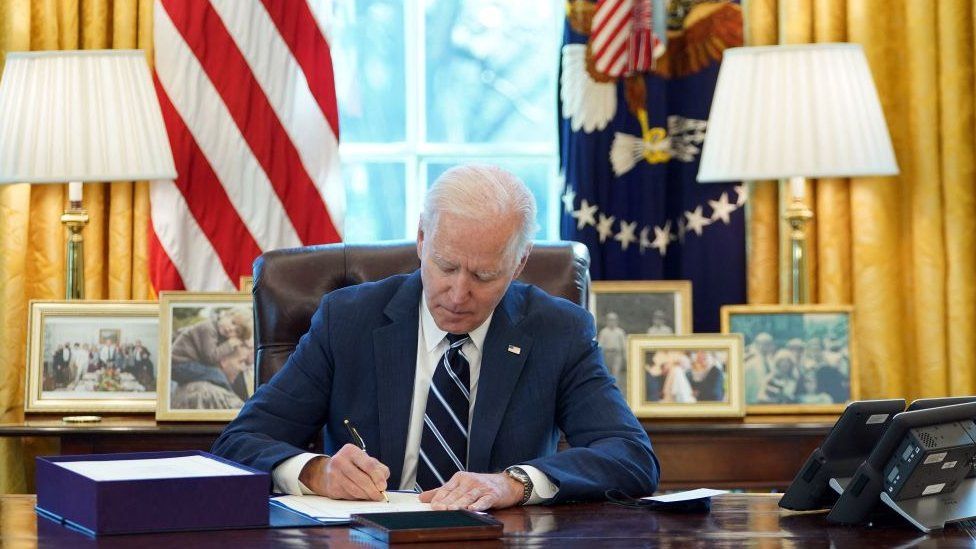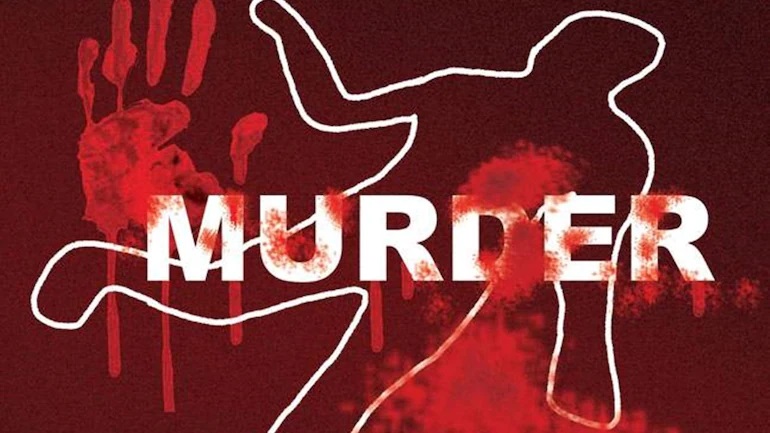A US jury has found a former police officer guilty of murder over the death of African-American George Floyd on a Minneapolis street last year.
Derek Chauvin, 45, was filmed kneeling on Mr Floyd’s neck for more than nine minutes during his arrest last May.
The widely watched footage sparked worldwide protests against racism and excessive use of force by police.
Chauvin was found guilty on three charges: second-degree murder, third-degree murder and manslaughter.
He will remain in custody until he is sentenced and could spend decades in jail.
The 12-member jury took less than a day to reach their verdict, which followed a highly charged, three-week trial that left Minneapolis on edge.
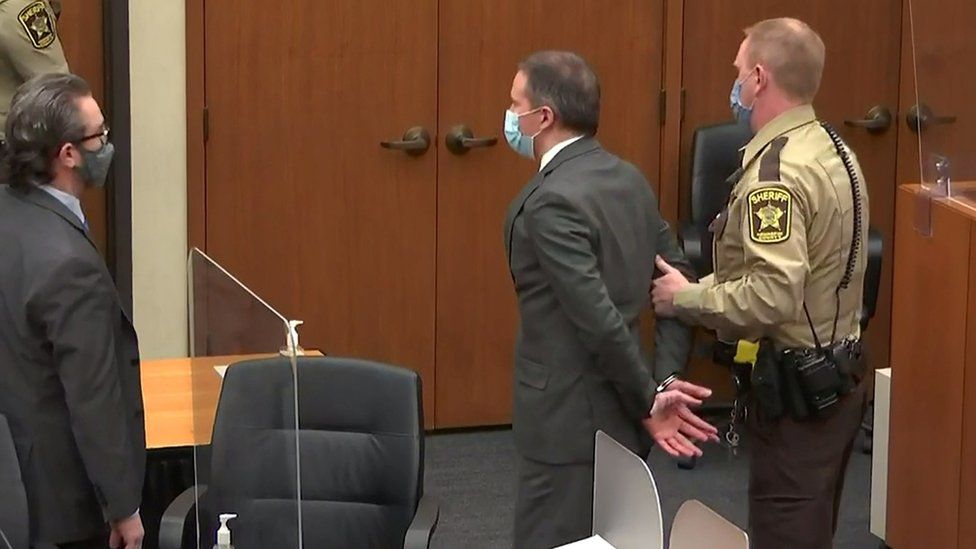 IMAGE COPYRIGHTREUTERS
IMAGE COPYRIGHTREUTERSAfter both sides presented closing arguments on Monday, the jury was isolated in a hotel with no outside contact so they could deliberate on a verdict, a process known as sequestration.
Jurors had to agree unanimously and were told they could not return home until they had made their decision.
The verdict prompted celebratory scenes outside the court, where several hundred people cheered as it was announced.
The Floyd family’s lawyer, Ben Crump, said it marked a “turning point in history” for the US.
“Painfully earned justice has finally arrived,” he tweeted. [It] sends a clear message on the need for accountability of law enforcement.”
President Joe Biden and Vice-President Kamala Harris called the Floyd family right after the verdict.
Mr Biden was heard saying that “at least now there is some justice”.
“We’re gonna get a lot more done. This is going to be a first shot at dealing with genuine systemic racism,” the president said.
Chauvin is expected to appeal against the verdict, US media report.
They say one of the most likely avenues of appeal is the huge publicity given to the case, with the defence team arguing that this might have influenced the jury.
Also, Presiding Judge Peter Cahill said on Monday that public comments by Democrat Congresswoman Maxine Waters could be grounds for an appeal.
Over the weekend, Ms Waters had urged protesters to “stay on the street” and “get more confrontational” if Chauvin were acquitted.
What happened to George Floyd?
The 46-year-old bought a pack of cigarettes at a convenience store in South Minneapolis on the evening of 25 May 2020.
A shop assistant believed he had used a counterfeit $20 bill and called the police after Mr Floyd refused to give the cigarettes back.
When police arrived, they ordered Mr Floyd out of his parked car and handcuffed him. A struggle ensued when officers tried to put a screaming Mr Floyd in their squad car. They wrestled him to the ground and pinned him under their weight.
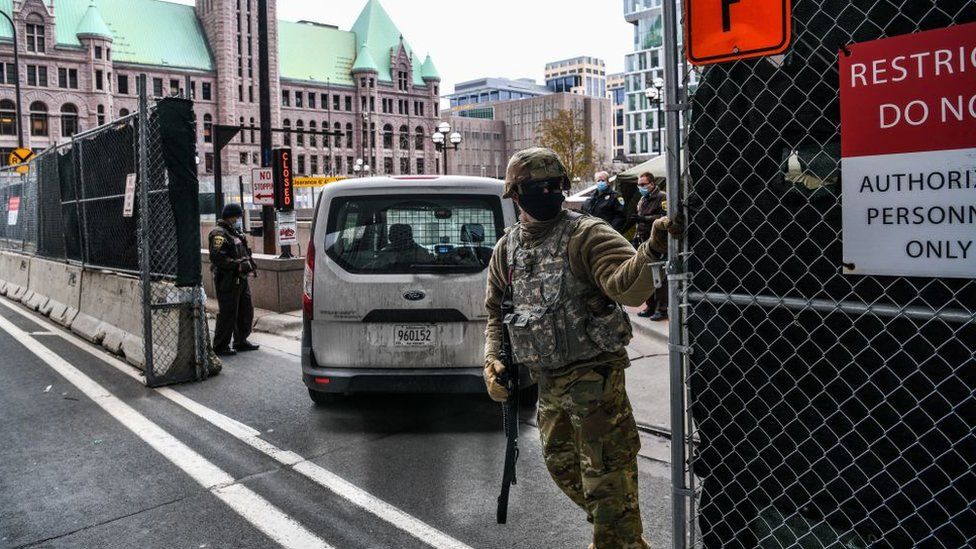 IMAGE COPYRIGHTAFP
IMAGE COPYRIGHTAFPChauvin pressed his knee into the back of Mr Floyd’s neck for over nine minutes, as the suspect and several bystanders pleaded for his life.
As he was being restrained, Mr Floyd said more than 20 times that he could not breathe, pleading for his mother and begging “please, please, please”.
When the ambulance arrived, Mr Floyd was motionless. He was pronounced dead about an hour later.
What happened during the trial?
During Chauvin’s trial, the jury heard from 45 witnesses and saw several hours of video footage.
Some of the most powerful testimony came from eyewitnesses. Several broke down in tears as they watched graphic footage of the incident and described feeling “helpless” as events unfolded.
Courteney Ross, Mr Floyd’s girlfriend of three years, and Philonise Floyd, his younger sibling, also took the stand to share details of the victim’s background.
Expert witnesses on behalf of the state testified that Mr Floyd died from a lack of oxygen due to the manner of restraint employed by Chauvin and his colleagues.
Chauvin himself chose not to testify, invoking his right to not incriminate himself with his responses.
What are the charges?
Manslaughter is when someone unintentionally causes another person’s death.
In second-degree murder, the act that led to someone’s death could have been intentional or unintentional. The maximum sentence for this charge is 40 years in prison.
Third-degree murder means that an individual has acted in a way that endangered one or more people, ending in death.
Police officers have rarely been convicted – if they are charged at all – for deaths that occur in custody, and the verdict in this trial has been widely seen as an indication of how the US legal system will treat such cases in future.
How did the jury reach its decision?
Twelve jurors were tasked with deciding if Chauvin would face time in jail or be acquitted.
The entire jury remained anonymous and unseen throughout the trial, but its demographics skewed younger, more white and more female.
After both sides presented closing arguments on Monday, the jury was isolated in a hotel with no outside contact so they could deliberate on a verdict, a process known as sequestration.
Jurors had to agree on a unanimous verdict and were told they could not return home until they had made their decision.


![MAK EVENTS [0594110706] MAK EVENTS [0594110706]](https://freshhope1.org/wp-content/uploads/2021/03/MAK-EVENTS-150x150.jpeg)







